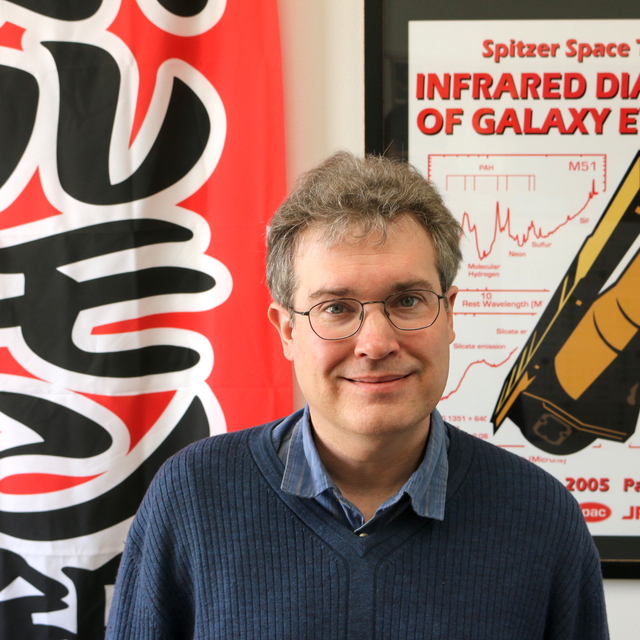June
2022
•
2022A&A...662A.112E
Authors
•
Euclid Collaboration
•
Scaramella, R.
•
Amiaux, J.
•
Mellier, Y.
•
Burigana, C.
•
Carvalho, C. S.
•
Cuillandre, J. -C.
•
Da Silva, A.
•
Derosa, A.
•
Dinis, J.
•
Maiorano, E.
•
Maris, M.
•
Tereno, I.
•
Laureijs, R.
•
Boenke, T.
•
Buenadicha, G.
•
Dupac, X.
•
Gaspar Venancio, L. M.
•
Gómez-Álvarez, P.
•
Hoar, J.
•
Lorenzo Alvarez, J.
•
Racca, G. D.
•
Saavedra-Criado, G.
•
Schwartz, J.
•
Vavrek, R.
•
Schirmer, M.
•
Aussel, H.
•
Azzollini, R.
•
Cardone, V. F.
•
Cropper, M.
•
Ealet, A.
•
Garilli, B.
•
Gillard, W.
•
Granett, B. R.
•
Guzzo, L.
•
Hoekstra, H.
•
Jahnke, K.
•
Kitching, T.
•
Maciaszek, T.
•
Meneghetti, M.
•
Miller, L.
•
Nakajima, R.
•
Niemi, S. M.
•
Pasian, F.
•
Percival, W. J.
•
Pottinger, S.
•
Sauvage, M.
•
Scodeggio, M.
•
Wachter, S.
•
Zacchei, A.
•
Aghanim, N.
•
Amara, A.
•
Auphan, T.
•
Auricchio, N.
•
Awan, S.
•
Balestra, A.
•
Bender, R.
•
Bodendorf, C.
•
Bonino, D.
•
Branchini, E.
•
Brau-Nogue, S.
•
Brescia, M.
•
Candini, G. P.
•
Capobianco, V.
•
Carbone, C.
•
Carlberg, R. G.
•
Carretero, J.
•
Casas, R.
•
Castander, F. J.
•
Castellano, M.
•
Cavuoti, S.
•
Cimatti, A.
•
Cledassou, R.
•
Congedo, G.
•
Conselice, C. J.
•
Conversi, L.
•
Copin, Y.
•
Corcione, L.
•
Costille, A.
•
Courbin, F.
•
Degaudenzi, H.
•
Douspis, M.
•
Dubath, F.
•
Duncan, C. A. J.
•
Dusini, S.
•
Farrens, S.
•
Ferriol, S.
•
Fosalba, P.
•
Fourmanoit, N.
•
Frailis, M.
•
Franceschi, E.
•
Franzetti, P.
•
Fumana, M.
•
Gillis, B.
•
Giocoli, C.
•
Grazian, A.
•
Grupp, F.
•
Haugan, S. V. H.
•
Holmes, W.
•
Hormuth, F.
•
Hudelot, P.
•
Kermiche, S.
•
Kiessling, A.
•
Kilbinger, M.
•
Kohley, R.
•
Kubik, B.
•
Kümmel, M.
•
Kunz, M.
•
Kurki-Suonio, H.
•
Lahav, O.
•
Ligori, S.
•
Lilje, P. B.
•
Lloro, I.
•
Mansutti, O.
•
Marggraf, O.
•
Markovic, K.
•
Marulli, F.
•
Massey, R.
•
Maurogordato, S.
•
Melchior, M.
•
Merlin, E.
•
Meylan, G.
•
Mohr, J. J.
•
Moresco, M.
•
Morin, B.
•
Moscardini, L.
•
Munari, E.
•
Nichol, R. C.
•
Padilla, C.
•
Paltani, S.
•
Peacock, J.
•
Pedersen, K.
•
Pettorino, V.
•
Pires, S.
•
Poncet, M.
•
Popa, L.
•
Pozzetti, L.
•
Raison, F.
•
Rebolo, R.
•
Rhodes, J.
•
Rix, H. -W.
•
Roncarelli, M.
•
Rossetti, E.
•
Saglia, R.
•
Schneider, P.
•
Schrabback, T.
•
Secroun, A.
•
Seidel, G.
•
Serrano, S.
•
Sirignano, C.
•
Sirri, G.
•
Skottfelt, J.
•
Stanco, L.
•
Starck, J. L.
•
Tallada-Crespí, P.
•
Tavagnacco, D.
•
Taylor, A. N.
•
Teplitz, H. I.
•
Toledo-Moreo, R.
•
Torradeflot, F.
•
Trifoglio, M.
•
Valentijn, E. A.
•
Valenziano, L.
•
Verdoes Kleijn, G. A.
•
Wang, Y.
•
Welikala, N.
•
Weller, J.
•
Wetzstein, M.
•
Zamorani, G.
•
Zoubian, J.
•
Andreon, S.
•
Baldi, M.
•
Bardelli, S.
•
Boucaud, A.
•
Camera, S.
•
Di Ferdinando, D.
•
Fabbian, G.
•
Farinelli, R.
•
Galeotta, S.
•
Graciá-Carpio, J.
•
Maino, D.
•
Medinaceli, E.
•
Mei, S.
•
Neissner, C.
•
Polenta, G.
•
Renzi, A.
•
Romelli, E.
•
Rosset, C.
•
Sureau, F.
•
Tenti, M.
•
Vassallo, T.
•
Zucca, E.
•
Baccigalupi, C.
•
Balaguera-Antolínez, A.
•
Battaglia, P.
•
Biviano, A.
•
Borgani, S.
•
Bozzo, E.
•
Cabanac, R.
•
Cappi, A.
•
Casas, S.
•
Castignani, G.
•
Colodro-Conde, C.
•
Coupon, J.
•
Courtois, H. M.
•
Cuby, J.
•
de la Torre, S.
•
Desai, S.
•
Dole, H.
•
Fabricius, M.
•
Farina, M.
•
Ferreira, P. G.
•
Finelli, F.
•
Flose-Reimberg, P.
•
Fotopoulou, S.
•
Ganga, K.
•
Gozaliasl, G.
•
Hook, I. M.
•
Keihanen, E.
•
Kirkpatrick, C. C.
•
Liebing, P.
•
Lindholm, V.
•
Mainetti, G.
•
Martinelli, M.
•
Martinet, N.
•
Maturi, M.
•
McCracken, H. J.
•
Metcalf, R. B.
•
Morgante, G.
•
Nightingale, J.
•
Nucita, A.
•
Patrizii, L.
•
Potter, D.
•
Riccio, G.
•
Sánchez, A. G.
•
Sapone, D.
•
Schewtschenko, J. A.
•
Schultheis, M.
•
Scottez, V.
•
Teyssier, R.
•
Tutusaus, I.
•
Valiviita, J.
•
Viel, M.
•
Vriend, W.
•
Whittaker, L.
Abstract
•
Euclid is a mission of the European Space Agency that is designed to constrain the properties of dark energy and gravity via weak gravitational lensing and galaxy clustering. It will carry out a wide area imaging and spectroscopy survey (the Euclid Wide Survey: EWS) in visible and near-infrared bands, covering approximately 15 000 deg2 of extragalactic sky in six years. The wide-field telescope and instruments are optimised for pristine point spread function and reduced stray light, producing very crisp images. This paper presents the building of the Euclid reference survey: the sequence of pointings of EWS, deep fields, and calibration fields, as well as spacecraft movements followed by Euclid as it operates in a step-and-stare mode from its orbit around the Lagrange point L2. Each EWS pointing has four dithered frames; we simulated the dither pattern at the pixel level to analyse the effective coverage. We used up-to-date models for the sky background to define the Euclid region-of-interest (RoI). The building of the reference survey is highly constrained from calibration cadences, spacecraft constraints, and background levels; synergies with ground-based coverage were also considered. Via purposely built software, we first generated a schedule for the calibrations and deep fields observations. On a second stage, the RoI was tiled and scheduled with EWS observations, using an algorithm optimised to prioritise the best sky areas, produce a compact coverage, and ensure thermal stability. The result is the optimised reference survey RSD_2021A, which fulfils all constraints and is a good proxy for the final solution. The current EWS covers ≈14 500 deg2. The limiting AB magnitudes (5σ point-like source) achieved in its footprint are estimated to be 26.2 (visible band IE) and 24.5 (for near infrared bands YE, JE, HE); for spectroscopy, the Hα line flux limit is 2 × 10−16 erg−1 cm−2 s−1 at 1600 nm; and for diffuse emission, the surface brightness limits are 29.8 (visible band) and 28.4 (near infrared bands) mag arcsec−2.
Links





